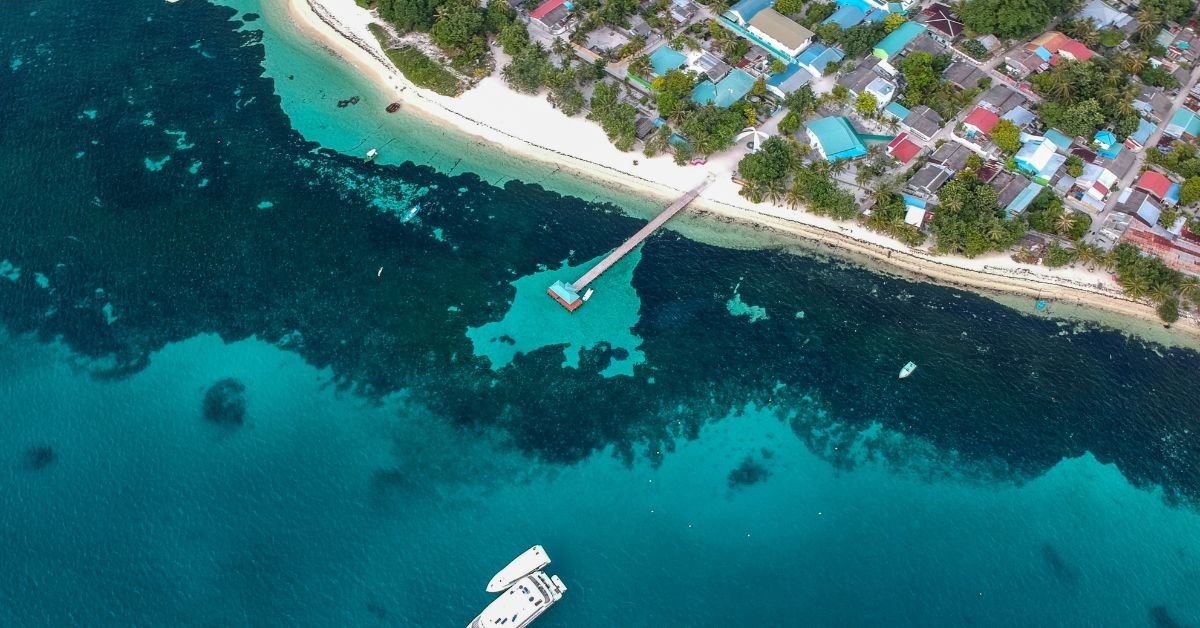Aruba is part of the ABC Islands (Aruba, Bonaire, Curaçao) in the Southern Caribbean Sea, just 15 miles off the coast of Venezuela. Here’s the exact location:
- Latitude: 12.5°N
- Longitude: 69.9°W
- Region: Outside the hurricane belt (unlike most Caribbean islands).
Check out this map of Aruba – it’s a 33-mile-long, 6-mile-wide island, roughly the size of Washington, D.C. Yep, small but mighty!
| Island | Size (sq miles) | Population |
|---|---|---|
| Aruba | 69.5 | 105,000 |
| Bonaire | 294 | 20,000 |
| Curaçao | 171 | 160,000 |
Ever wondered… why Aruba’s so dry and desert-like? It’s because of its location below the equator – trade winds keep it arid but sunny year-round.
Where Is Bonaire Located? The Lesser-Known Neighbor
Let’s talk about Aruba’s sister island, Bonaire. Where is Bonaire located? It’s 30 miles east of Aruba, sharing the same Dutch Caribbean heritage but with a wilder, more rugged vibe. While Aruba is developed for tourists, Bonaire is the diver’s paradise – home to pristine coral reefs and flamingo sanctuaries.
| Feature | Aruba | Bonaire |
|---|---|---|
| Beaches | Palm Beach, Eagle Beach | Klein Bonaire, Lac Bay |
| Activities | Resorts, casinos, ATVs | Diving, snorkeling, hiking |
| Atmosphere | Lively, touristy | Chill, eco-friendly |
Bonaire is located where the Atlantic meets the Caribbean, making it a haven for sea life. Dive enthusiasts, take note!
How Big Is Aruba, Really? The Surprising Answer
Let’s address the elephant in the room: how big is Aruba? It’s tiny:
- Length: 19.7 miles (31.7 km)
- Width: 6 miles (9.7 km)
- Total Area: 69.5 sq miles (180 sq km)
To put it into perspective:
- Aruba is smaller than Martha’s Vineyard (96 sq miles).
- You can drive across the island in 30 minutes (north to south).
But don’t let its size fool you – Aruba packs a punch:
- 18+ beaches (like Baby Beach and Malmok Beach).
- Arikok National Park (covers 20% of the island).
- Philip’s Animal Garden (a quirky wildlife sanctuary).
Real Talk from a Traveler:
“I visited Aruba thinking it was just another beach destination. But the California Lighthouse, guarachao dancing, and desert cacti stole my heart. It’s unique, not just tropical!”

Why Aruba’s Location Makes It the Ultimate Vacation Spot
Here’s the geographical genius of Aruba’s location:
- Year-Round Sunshine: Outside the hurricane belt means no storm disruptions.
- Dutch Influence: Stable government, low crime, and excellent infrastructure.
- Close to the US: Direct flights from Miami (2.5 hours) or New York (4 hours).
- Diverse Landscapes: Deserts, beaches, and rugged hills in one tiny package.
Compare this to Hawaii (mid-Pacific, expensive flights) or The Bahamas (hurricane risks). Aruba wins in convenience + charm.
The Hidden Gems of Aruba: Off the Beaten Path
Beyond the resorts and beaches, Aruba has secret spots waiting to be explored:
- Alto Vista Chapel: Panoramic views of the north coast.
- Guadirikiri Cave: Ancient Arawak petroglyphs.
- Butterfly Farm: 200+ species in a tropical garden.
Pro tip: Rent a 4×4 vehicle to tackle Aruba’s rocky terrain and discover these hidden gems.
Frequently Asked Questions
Q1: Is Aruba Part of the United States?
A. Nope! Aruba is a constituent country of the Kingdom of the Netherlands. Think autonomous but connected.
Q2: How Far Is Aruba from Venezuela?
A. Just 15 miles (24 km) – you can spot the mainland on a clear day!
Q3: Can I Drive from Aruba to Bonaire?
A. Ha! Nope. They’re separate islands. Fly or take a ferry (rare, ~60
−60−100).
Q4: What’s the Best Time to Visit Aruba?
A. Year-round! Warm weather (80-90°F) and $0 hurricane risk. Peak season: Dec-Apr (higher rates).
Conclusion
Understanding where is Aruba is just the beginning. This Dutch Caribbean gem offers:
- Sun-soaked beaches without the crowds.
- Adventure activities (ATVs, ziplining, diving).
- Rich culture (Dutch, African, indigenous mix).

